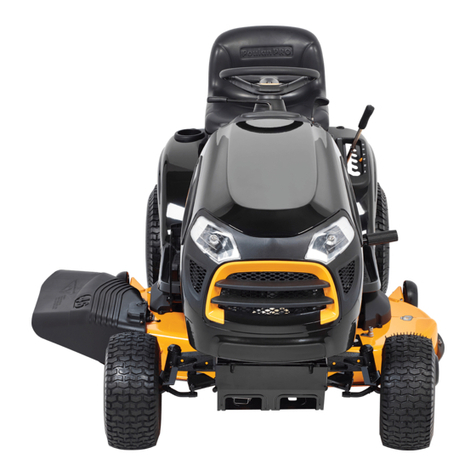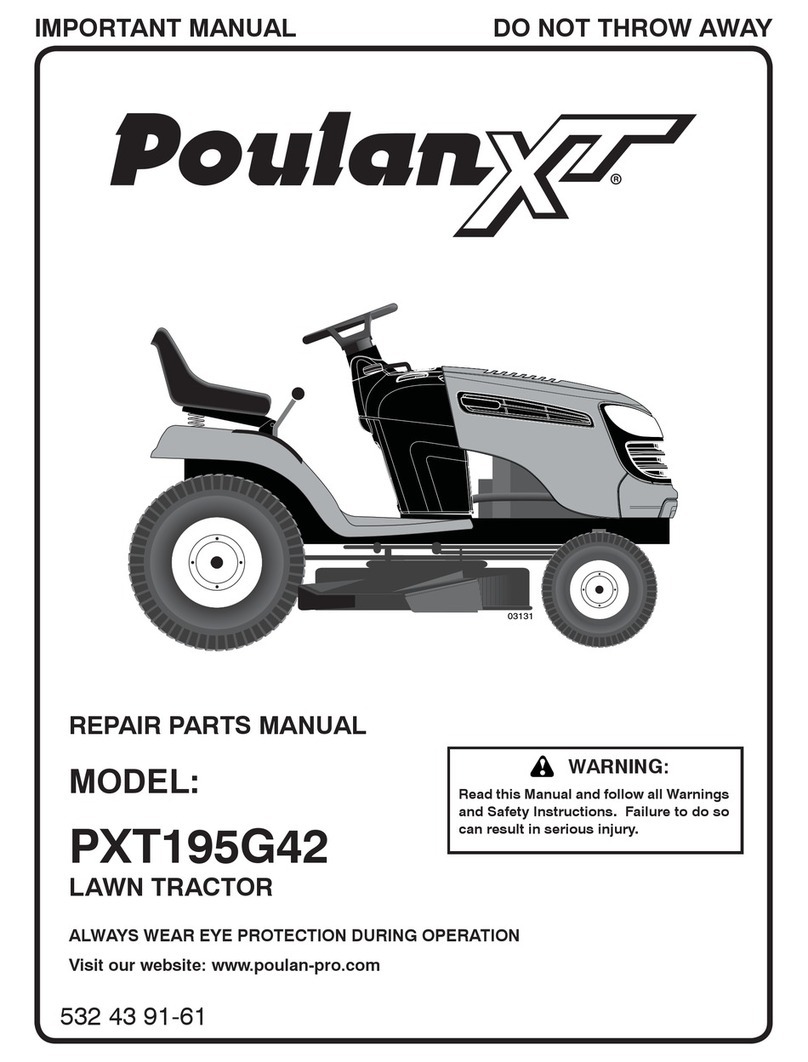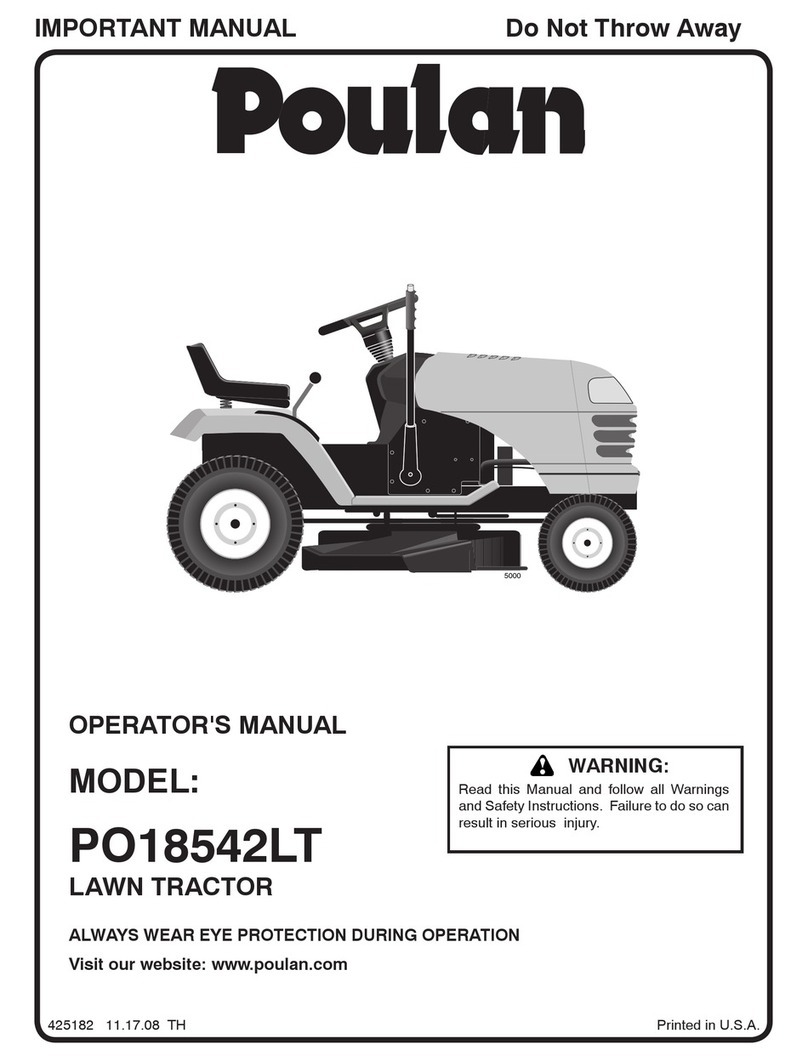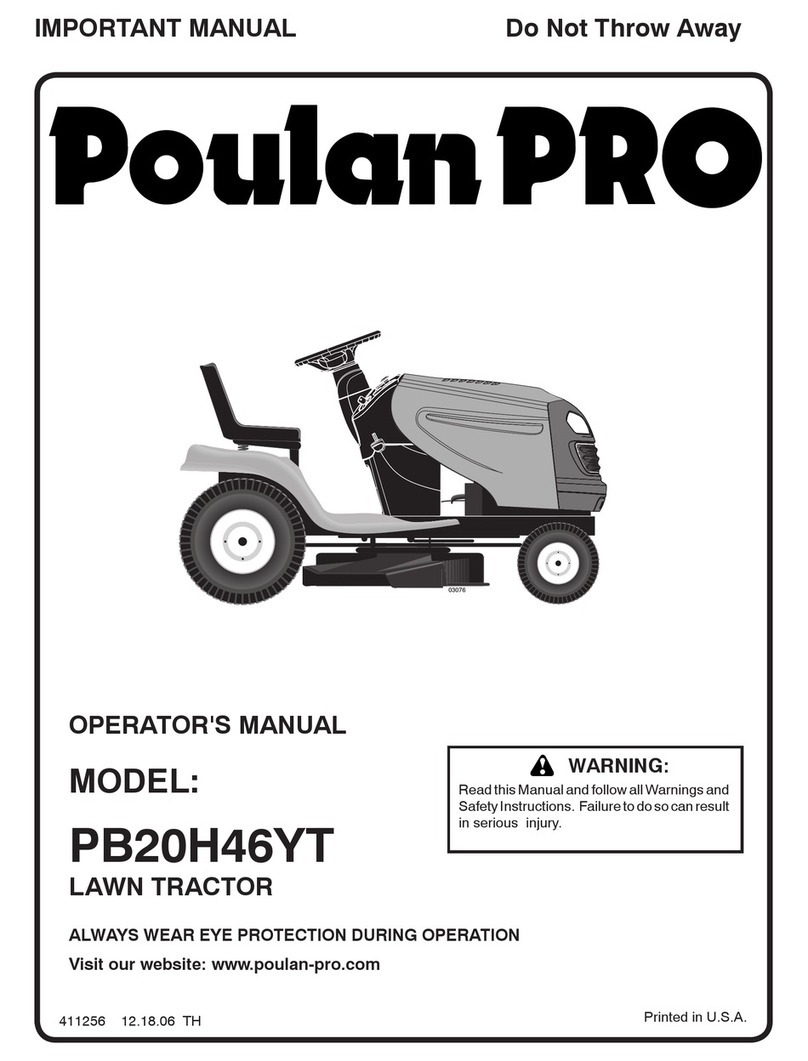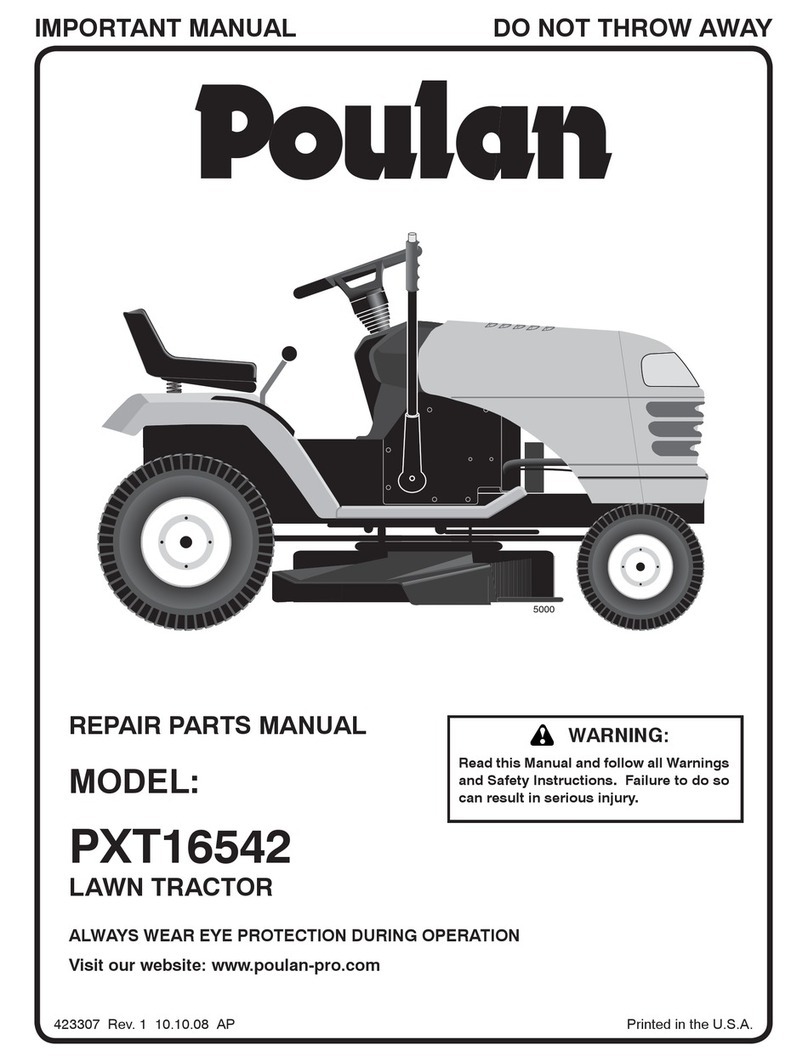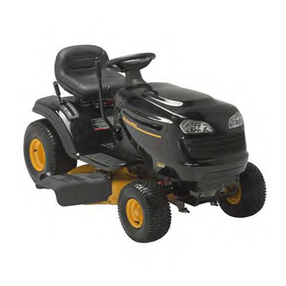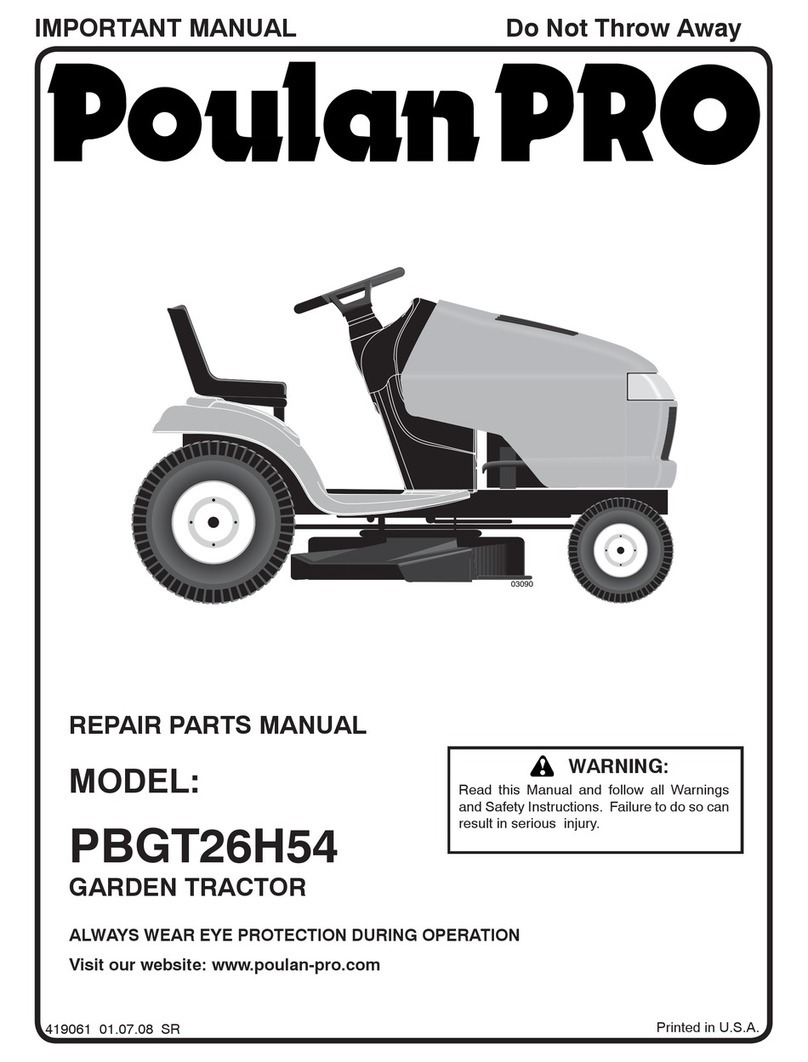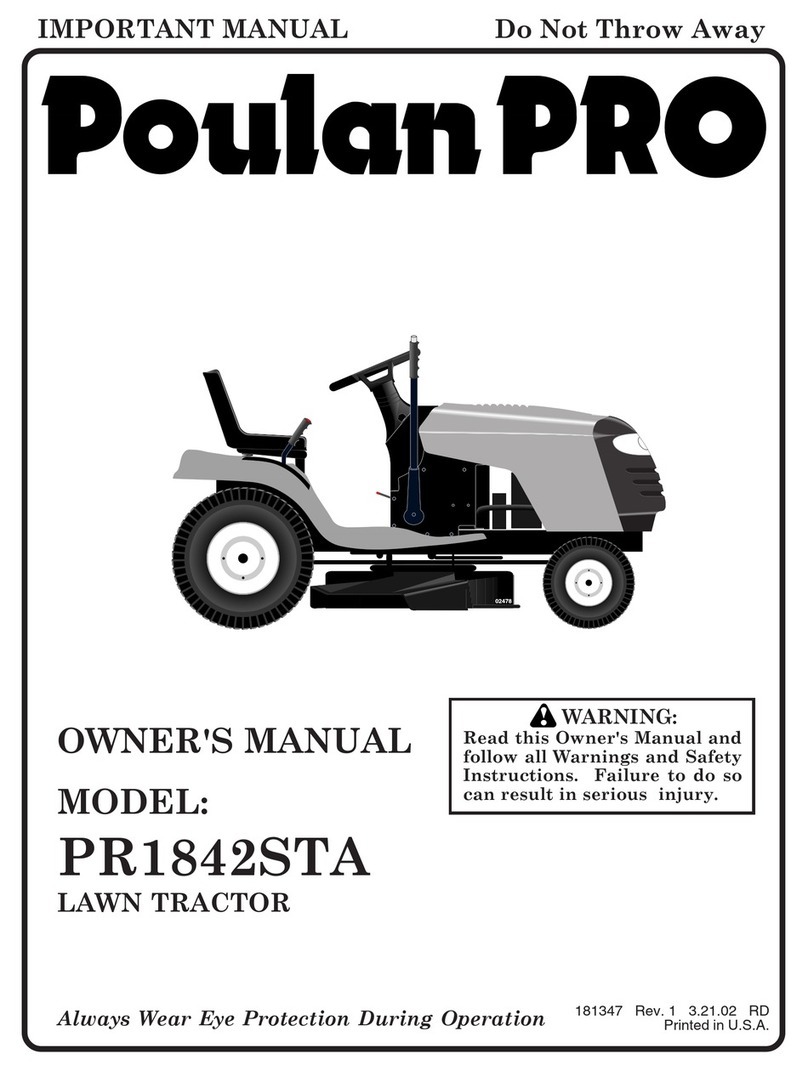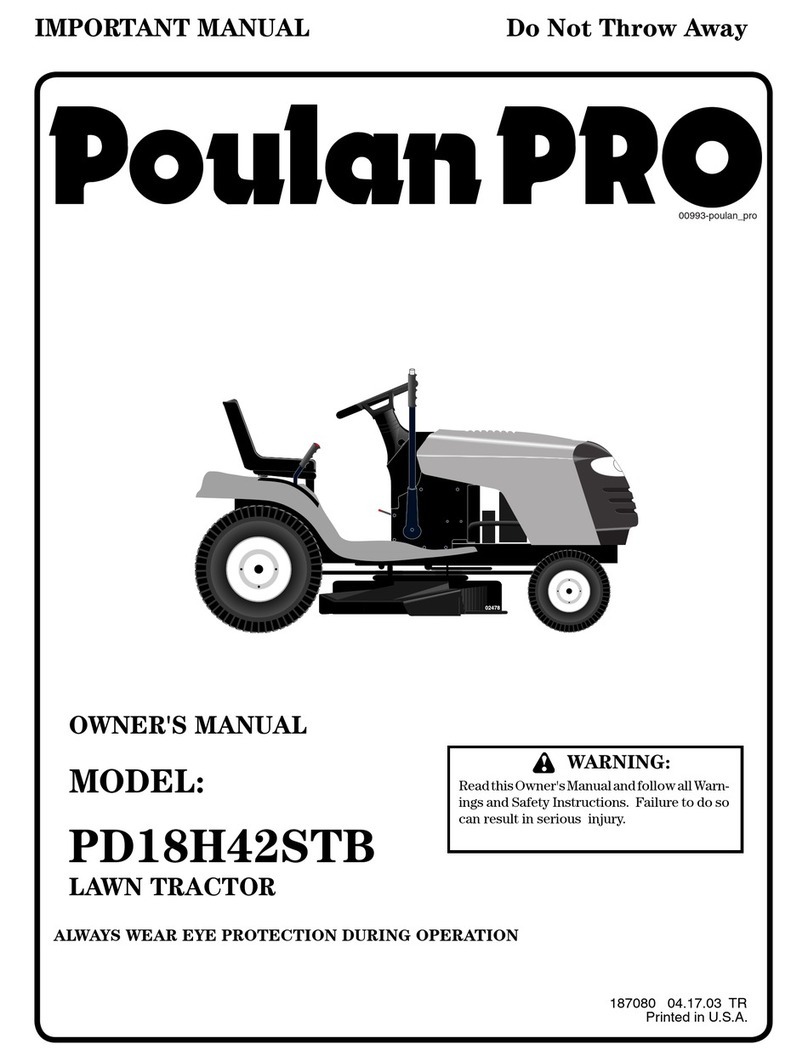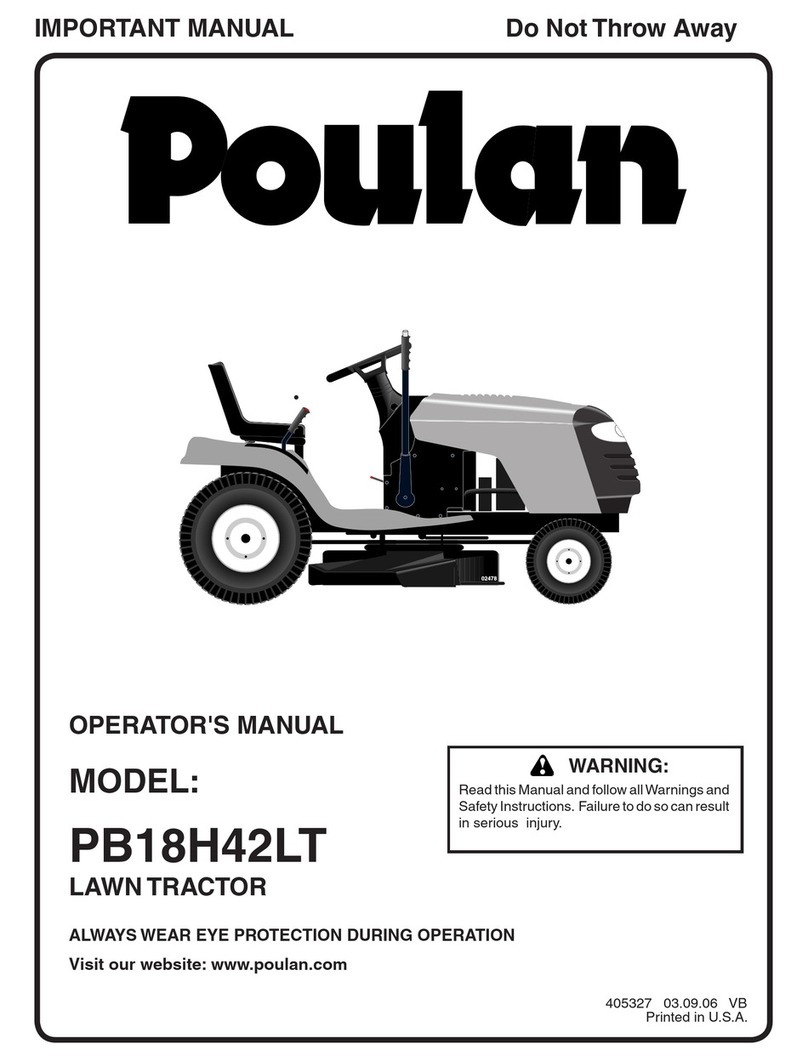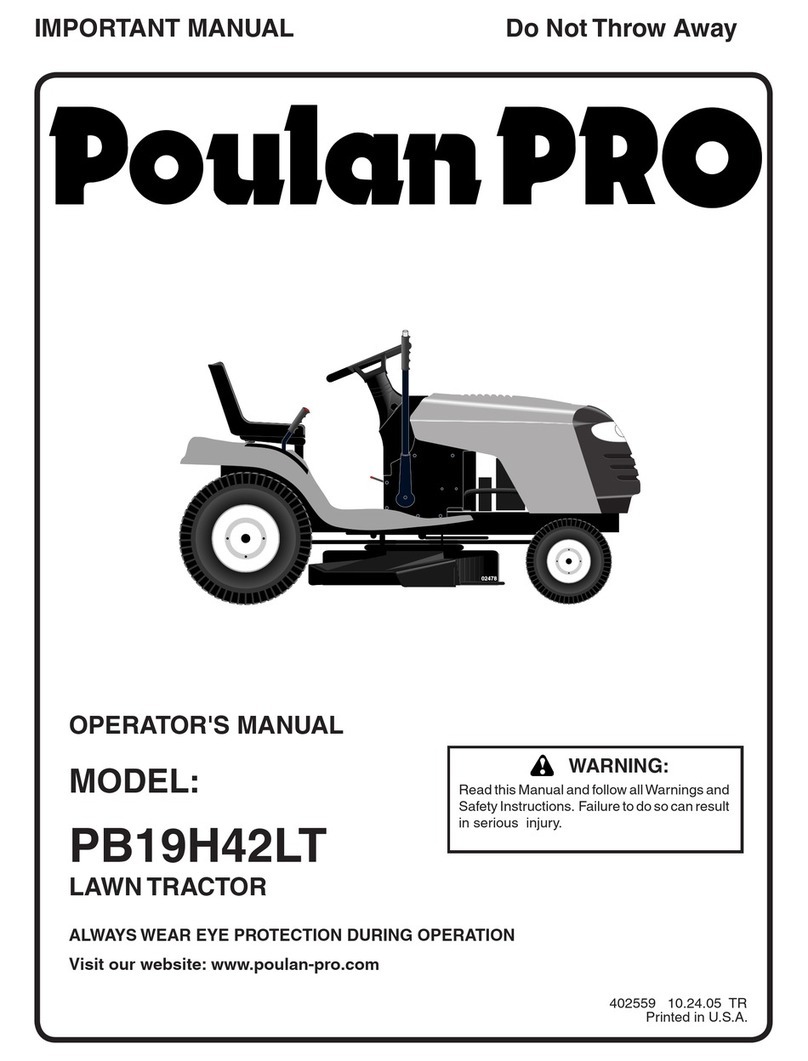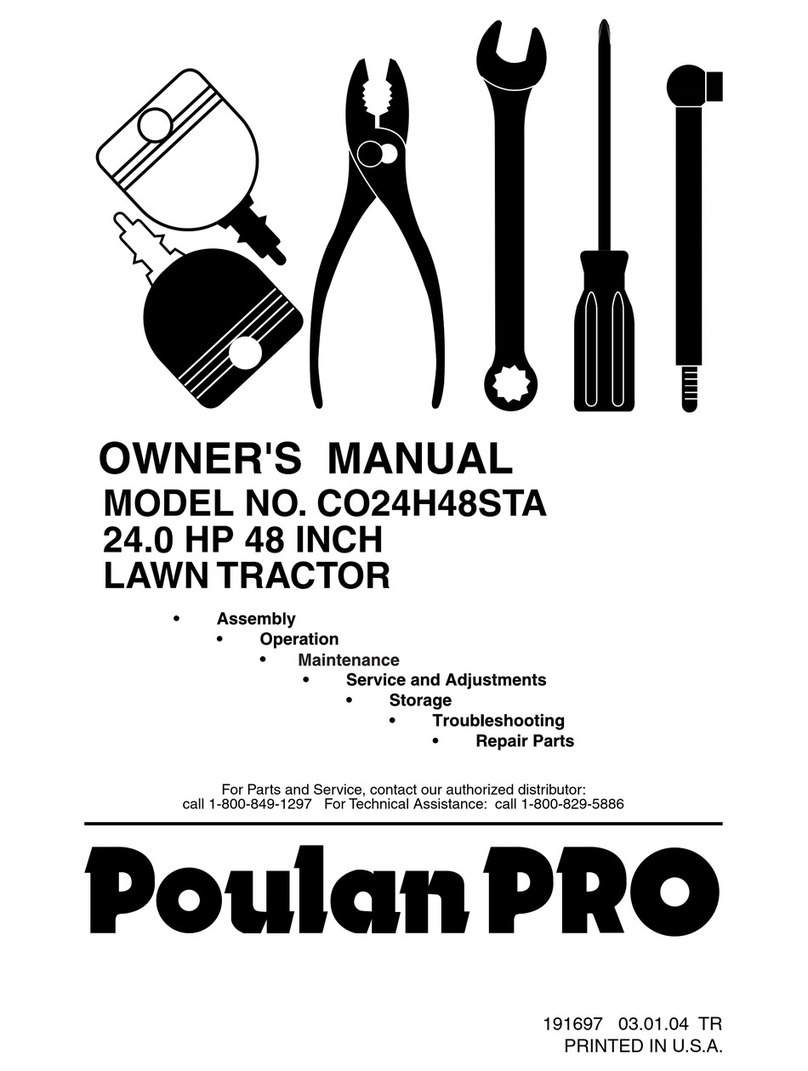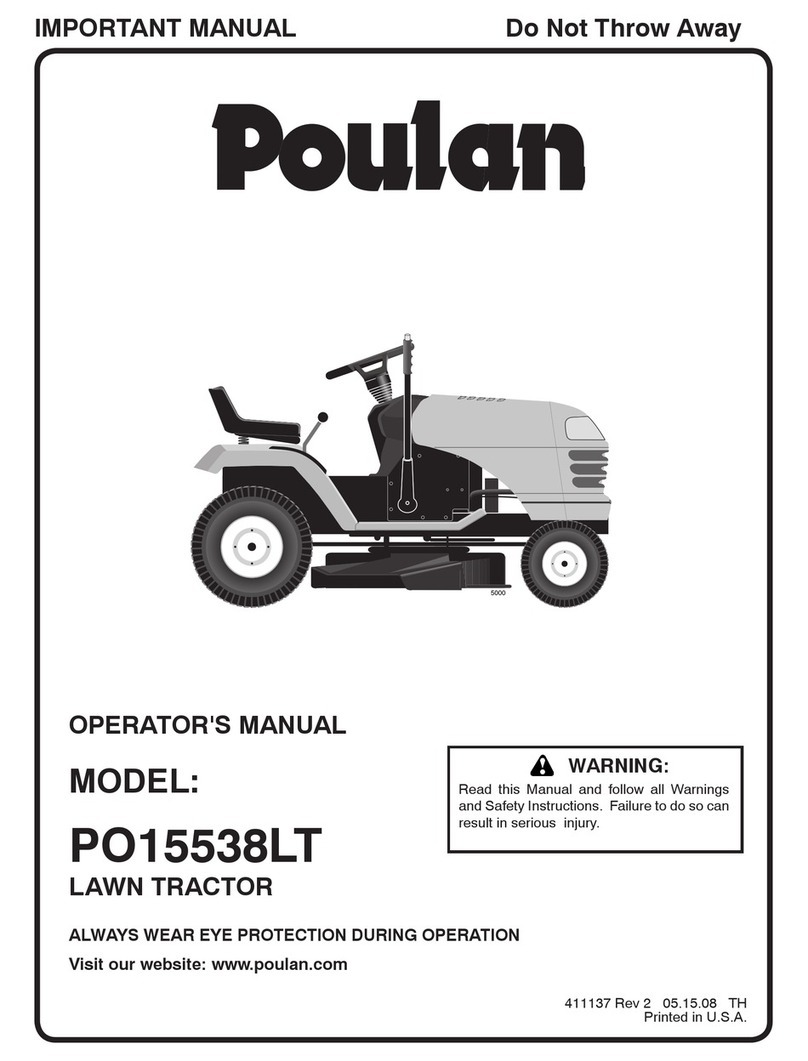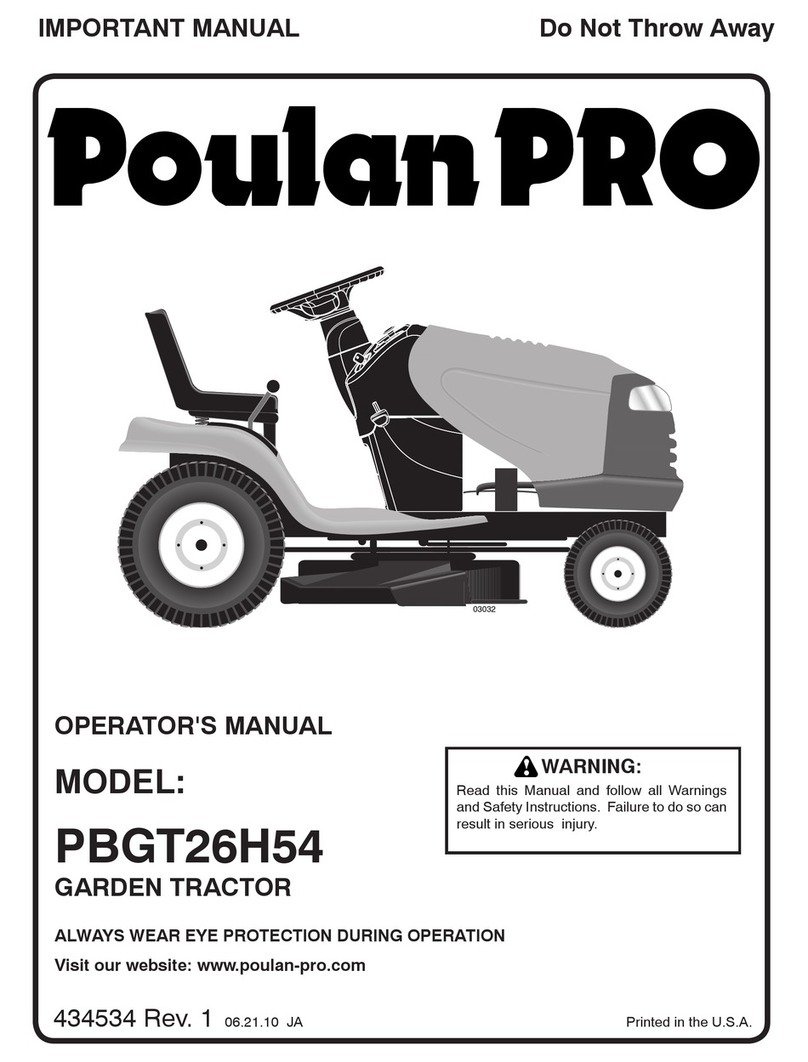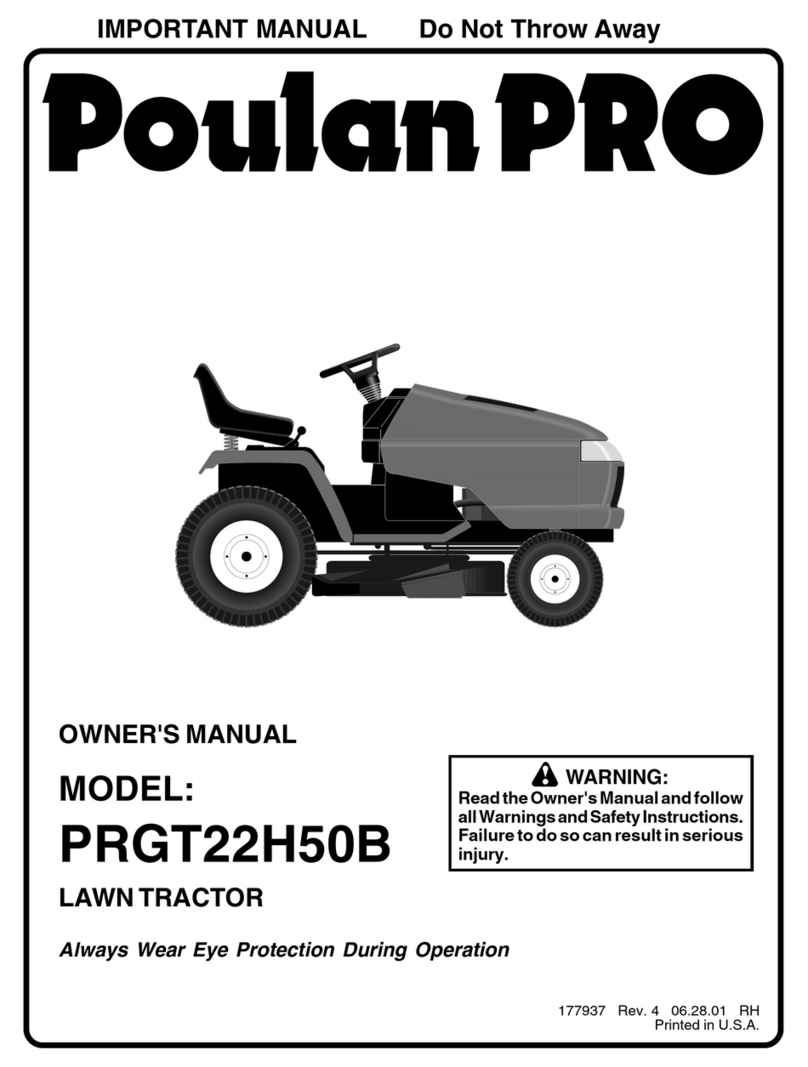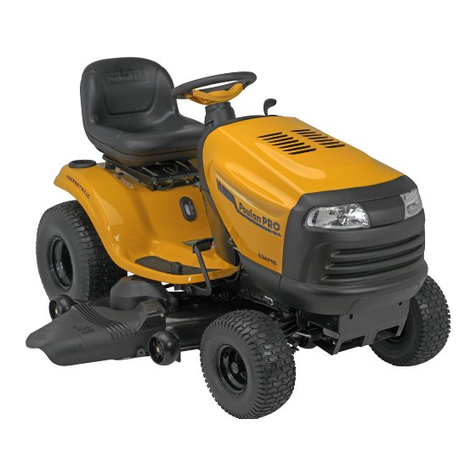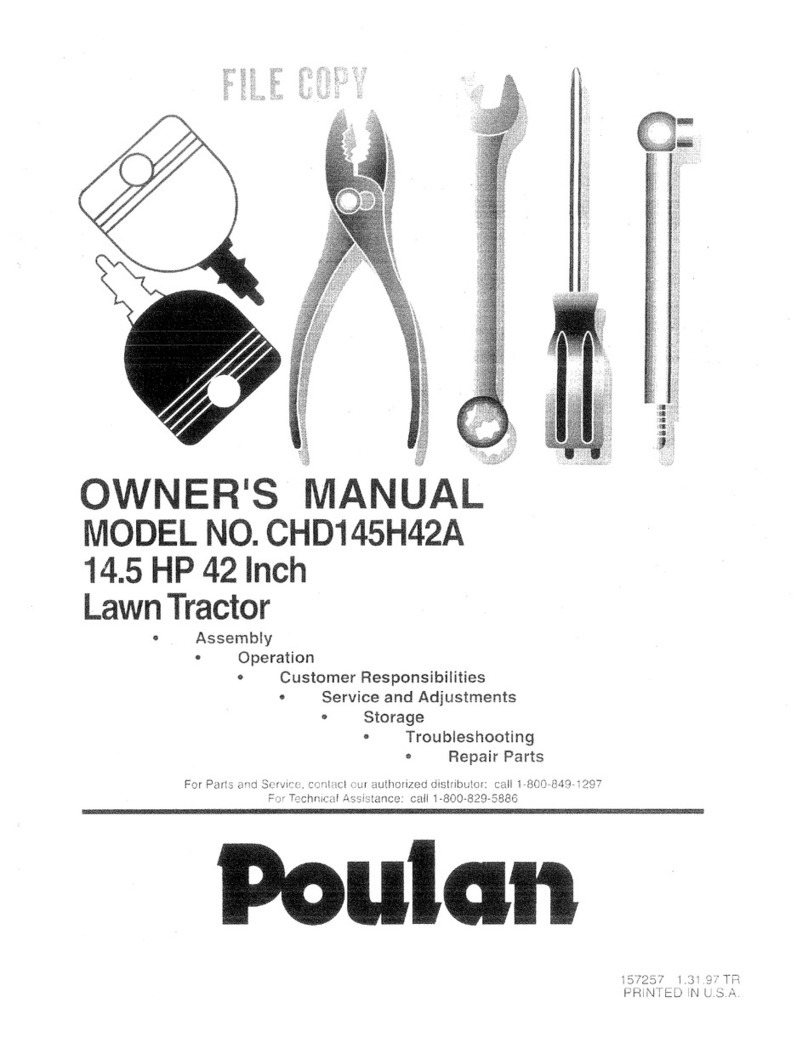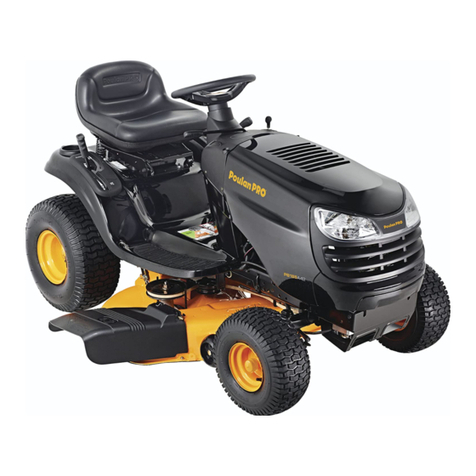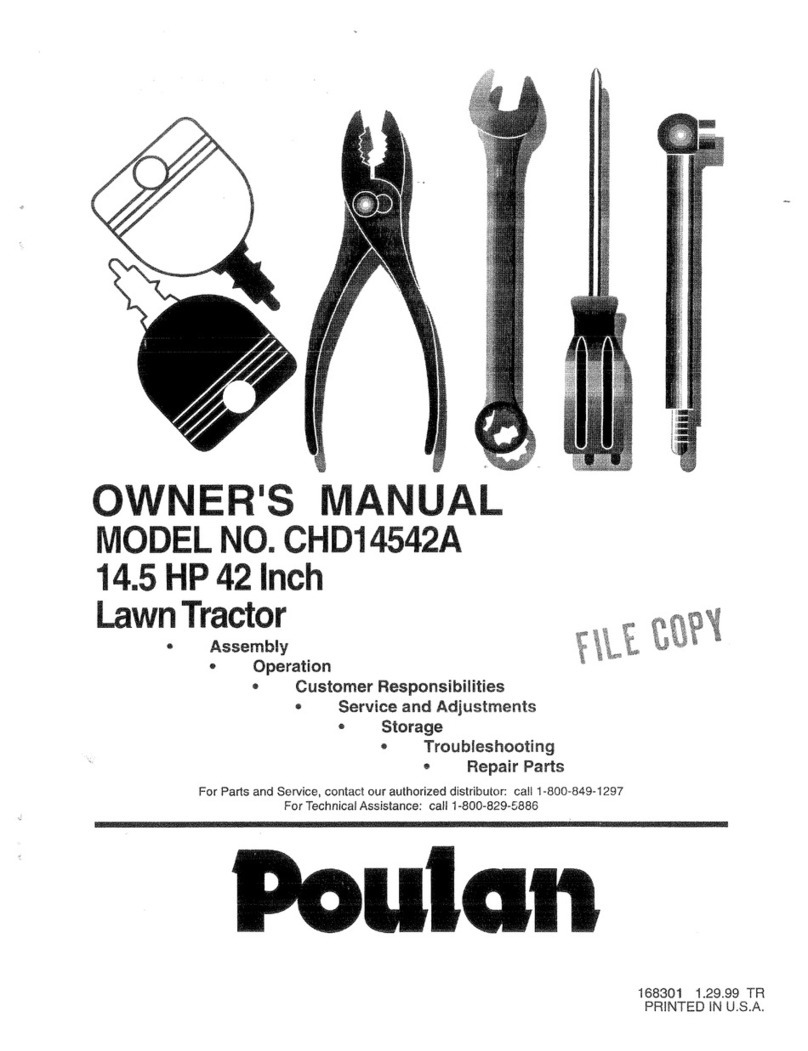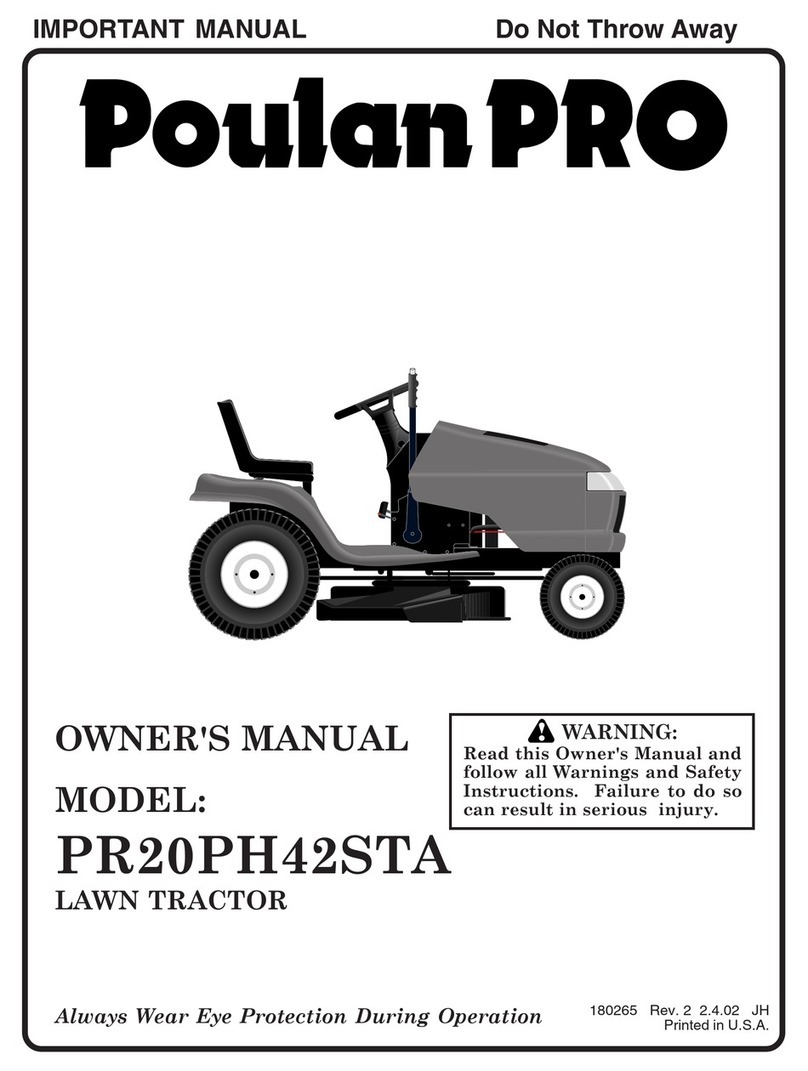SAFETY RULES ^
SAFE OPERATION PRACTICES FOR RIDE-ON MOWERS
IMPORTANT: THIS CUTTING MACHINE IS CAPABLE OF AMPUTATING HANDS AND FEET AND THROWING OBJECTS.
FAILURE TO OBSERVE THE FOLLOWING SAFETY INSTRUCTIONS COULD RESULT IN SERIOUS INJURY OR DEATH.
I. GENERAL OPERATION
•Read, understand,and followatlinstructions inthe manual
and on the machine beforestarting.
•Only allow responsible adults, who are familiar with the
instructions,tooperate the machine.
Clear the area of objectssuch as rocks, toys, wire, etc.,
whichcould be pickedup and thrown by the blade.
•Be sure the area isclear of otherpeople before mowing.
Stop machine ifanyone entersthe area.
Never carry passengers.
• Do not mow in reverse unless absolutely necessary.
Always look down and behind before and while backing.
• Be aware ofthe mowerdischargedirection and do notpoint
itat anyone. Do not operate the mower without either the
entire grass catcher or the guard in place.
• Slow down before turning.
• Never leave a running machine unattended. Always tum
off blades, set parking brake, stop engine, and remove
keys before dismounting.
• Turn off blades when not mowing.
• Stop engine before removing grass catcher or unclogging
chute.
• Mow only in daylight or good artificial light.
• Do not operate the machine while under the influence of
alcohol ordrugs.
•Watch for traffic when operating near or crossing road-
ways.
• Use extra care when loading or unloading the machine into
a trailer or truck.
• Dataindicates that operators, age 60years and above, are
involved in a large percentage of riding mower-related
injuries. These operators should evaluate their ability to
operate the dding mower safely enough to protect them-
selves and others from serious injury.
• Keep machine free ofgrass, leaves or other debris build-
up which can touch hot exhaust /engine parts and bum.
Do not allow the mower deck to plow leaves
or other debris which can cause build-up to occur. Clean
any oil or fuel spillage before operating or storing the
machine. Allow machine to cool before
storage.
II. SLOPE OPERATION
Slopes are a major factor related to loss-of-control and tipever
accidents, which can result in severe injury or death. All slopes
require extra caution. If you cannot back up the slope or if you feel
uneasy on it, do not mow it.
DO:
•Mow up and down slopes, not across.
• Remove obstacles such as rocks, tree limbs, etc.
• Watch for holes, ruts, or bumps. Uneven terrain could
overturn the machine. Tafl grass can hide obstacles.
• Use slow speed. Choose a low gear so that you will not
have to stop or shift while on the slope.
• Follow the manufacturer's recommendations for wheel
weights or counterweights to improve stability.
• Use extra care with grass catchers or other attachments.
These can change the stability of the machine.
• Keep all movement on the slopes slowand gradual Do
not make sudden changes in speed or direction.
• Avoidstartingorstoppingonaslope. Iftireslosetraction,
disengage the blades and proceed slowly straight down
the slope.
DO NOT:
•Do not turnon slopes unlessnecessary, and then, turn
slowlyand graduallydownhill,ifpossible.
•Do not mow near drop-offs,ditches, or embankments.
The mowercould suddenlytum overifa wheel isoverthe
edge ofa cliffor ditch,or ifan edge caves in.
•Do notmow on wetgrass. Reduced traction could cause
sliding.
•Donottrytostabilizethemachinebyputtingyourfooton
theground.
•Do not use grass catcher on steep slopes.
III. CHILDREN
Tragic accidents can occur if the operator is not alert to the
presence of children. Children are often attracted to the
machine and the mowing activity. Neverassumethatchildren
will remain where you last saw them.
• Keep children out of the mowing area and under the
watchful care of another responsible adult.
• Be alert and turn machine off ifchildren enter the area.
• Beforeandwhenbacking, lookbehindanddownforsmall
children.
•Never carry children. They may fall off and be seriously
injured or interferewith safe machine operation.
• Never allow children to operate the machine.
•Use extracare when approachingblind corners, shrubs,
trees, or other objects that may obscure vision.
IV. SERVICE
•Useextracareinhandlinggasolineand other fuels. They
are flammable and vaporsare explosive.
-Useonlyan appreved container.
-Never remove gas cap or add fuel with the engine
running. Allowengineto coolbeforerefueling. Do not
smoke.
- Never refuel the rnachine indoors.
- Never store the machine or fuelcontainer inside where
there is an open flame, such as a water heater.
• Never run a machine inside a closed area.
• Keep nuts and bolts, especially blade attachment bolts,
tight and keep equipment in good condition.
• Never tamper with safety devices. Check their proper
operation regularly.
•Keep machinefree ofgrass,leaves, orotherdebdsbuild-
up.Clean oilorfuelspillage.Allowmachinetocoolbefore
stonng.
•Stop and inspectthe equipment ifyou strike an object.
Repair, ifnecessary,before restarting.
•Never make adjustments or repairs with the engine
running.
•Grasscatchercomponentsare subjecttowear, damage,
and deterioration,which could expose moving parts or
allowobjectstobethrown.Frequentlycheckcomponents
and replace with manufacturer's recommended parts,
when necessary.
• Mower blades are sharp and can cut. Wrap the blade(s)
or wear gloves, and use extra caution when servicing
them.
• Check brake operation frequently. Adjust and service
as required.
2
